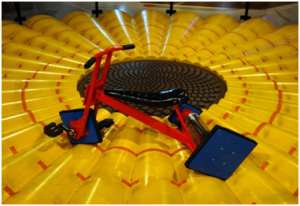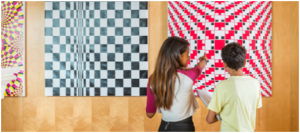Nerdiest or Coolest Museums in the world?
With mathematics it has always been a love – hate kind of relationship. At school children learn the math behind every great discovery, covering the theory and completing practical examples without knowing the actual application in our daily lives. This article is based on math museums around the world in alignment with the use of different tools of THEAMA project such as geometry (Tool 2, 3, 13, 29) and symmetry, the golden ratio (Tool 8, 17), origami (Tool 5).
One can observe two completely opposite sides of mathematics: the scientific/educational side which is the formal application of mathematics learned in schools and the entertaining/fun side being the informal way of learning mathematics through non-formal or informal approaches, some of them which can also be used in the framework of activities within a museum.
The first ever museum dedicated in mathematics located in the US was accessible to the public in 1980. The Goudreau Museum named after Bernhard Goudreau, a great mathematics teacher, on Long Island featured for example 3 dimensional models, oversized wooden math games and puzzles. The museum closed its doors in 2006, but not long after in 2012 the National Museum of Mathematics started to operate in Manhattan, New York (source: Wikipedia – https://en.wikipedia.org/wiki/Goudreau_Museum_of_Mathematics_in_Art_and_Science). It has over 30 interactive exhibitions, with the most known exhibit being a special square wheeled tricycle which moves smoothly on a catenary surface. It features structures that one can find all around the world conveying the illuminating role of mathematics without discriminating age. The National Museum of Mathematics – also known as MoMath – has received several recognition and awards, an example is the Editor’s Choice award in 2019. (source: MoMath website – https://momath.org/)

Moving on to a European museum, a math museum situated in Germany, “Mathematikum” opened its doors in 2002. Visitors from all around the world travel in order to appreciate the huge variety of exhibits – over 170 interacting exhibits to be exact. For example, some of the exhibits include solving puzzles, embodying the golden ratio, contemplating infinity and even making music by using mathematics. A mathematical experience can be gained by participating to an exhibit offered by the museum making a better sense of the ideas constructed by general math concepts. The main aspiration of the museum is to attract people of any age, gender, culture and educational background in taking part to its unique experiments. Who doesn’t hate being taught uncountable formulae and equations and having to know them by heart? Various complex mathematical concepts can be effortlessly understood through these experiments provided by Mathematikum museum. According to the founder Prof. Albrecht Beutelspacher:
“it is essential to communicate mathematics to non-mathematicians”
(source: Mathematikum website – https://www.mathematikum.de/en/the-mathematikum/vision).
Best known for the first permanent exhibition in Palau Mercader, Cornellà de Llobregat 2014, the Museum of Mathematics of Catalonia (MMACA) in Spain is also recognized for its travelling exhibitions around the country and its participation in science festivals and fairs. The museum operates mostly with organized activities arranged by schools however, it is open to the public two days per week. (source: Imaginary website – https://imaginary.org/news/new-permanent-exhibition-mathematical-experiences-of-mmaca-barcelona-spain) The exhibition, known as “Mathematical Experiences”, includes more than one hundred interactive exhibits most of them being wooden handcrafted exhibits such as the workshop “discovering geometry”. Workshops aim to attract the attention of each one of the children, to improve communication skills between classmates and to help them develop mathematical thinking skills for different challenges. What is most fascinating and unique about this museum is that through its “travelling exhibition” people in other cities of Spain get to explore some of the temporary installations of the museum (source: MMACA website – http://mmaca.cat/)

All three museums mentioned above, try to uncover the fundamental role, both tools and ideas used in building our world, using interactive approaches that display the connection between mathematics and other subjects one can find at school (music, art, physics, engineering, technology).
Considering all the above, one can say that a math museum brings people closer together by communicating through this universal language called mathematics.





